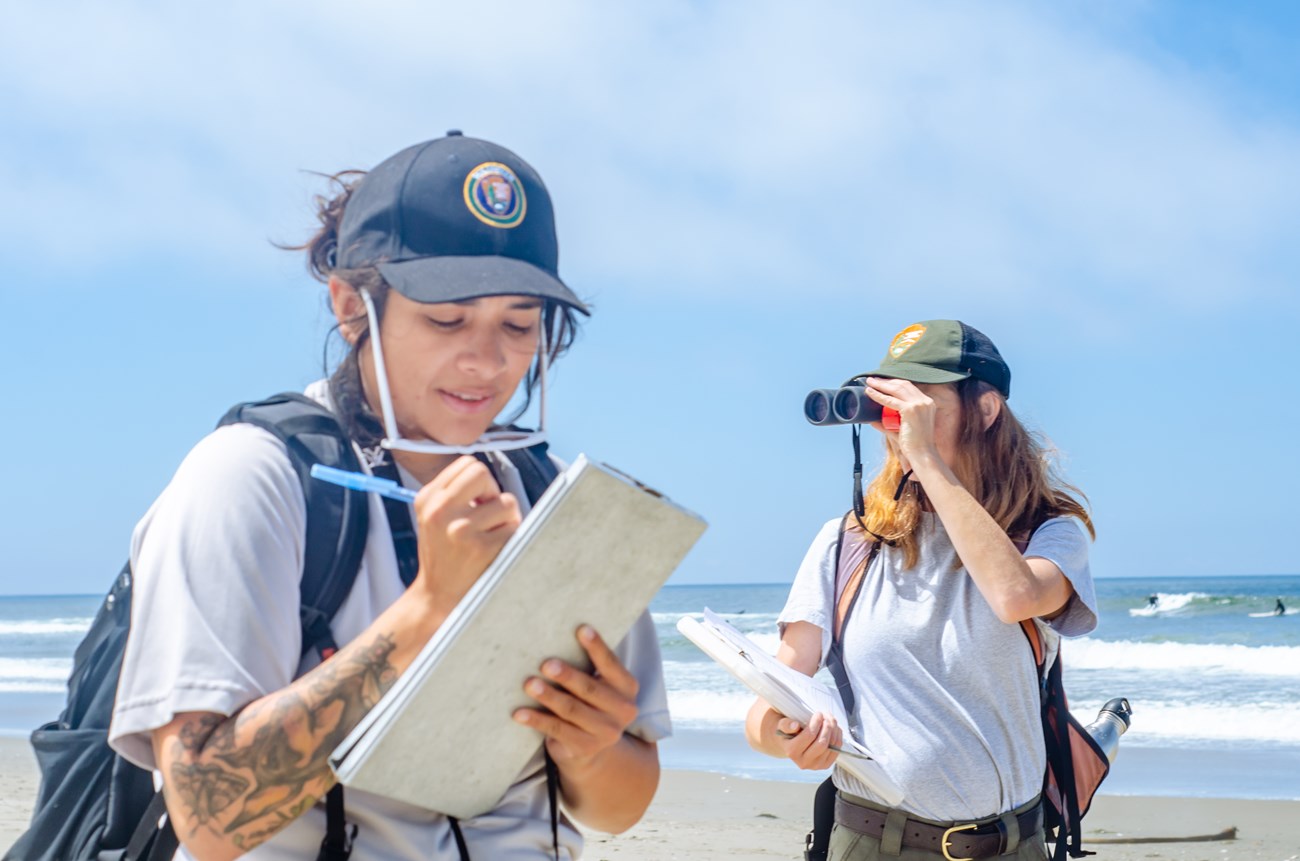Last updated: June 13, 2023
Article
Sharing the Shore with Western Snowy Plovers at Ocean Beach

NPS / Environment for the Americas / Jailyn Hoskins
October 2022 - Ocean Beach is exactly what I thought an urban California beach in the summer would look like. There were lots of surfers and families and dogs just hanging out enjoying the weather. I was there with Wildlife Biologist Rachel Townsend and Wildlife Intern Ana Arce to look for a small bird, the western snowy plover.
These federally threatened shorebirds return to Golden Gate in July after leaving to breed each spring. It was my first time seeing western snowy plovers and I was told to keep my eyes out not only higher up in the beach, but to look in footprint indentations as they will sometimes hide there!

NPS / Environment for the Americas / Jailyn Hoskins
Western snowy plovers need wide beaches that allow them to be on alert for predators while they feast on kelp flies and other beach invertebrates. They hang around throughout the winter to conserve their energy, plucking little insects out of the sand and occasionally chasing each other. Even outside of the breeding season it’s important for the plovers to have minimal disturbances so that they can save their energy for migration and breeding.
The importance of conserving their energy wasn’t immediately clear to me, but as we walked along the beach, I was able to see how skittish the plovers could be. It was easy to spook them even from dozens of feet away. It takes a lot of energy to fly around the beach fleeing danger, so the giant plover-shaped sign alerting the public to have their dogs leashed in the area was a nice reminder to stay out of their way.
Rachel and Ana were there to observe the numbers of plovers, people, unleashed and leashed dogs, and the other shorebirds along different sections of the beach for the San Francisco Bay Area Network’s Western Snowy Plover Monitoring Program. Western snowy plovers are listed as a federally threatened species and their numbers are in decline due to habitat loss and degradation. Unfortunately, the future of Ocean Beach is unclear as climate change and coastal erosion threaten the area.
Along the beach I could hear children laughing, see surfers walking back to their cars in wet suits, and feel the sun warm my face. It had been a few hours of walking when I smiled because I remembered that this was all for the little golf ball-sized birds.
Joining the team in August allowed me to witness just one day of this longstanding program. Ocean Beach is an important area for snowy plovers and it’s important that the public does their part to ensure a future for these beautiful birds.
For more information
- San Francisco Bay Area Network Western Snowy Plover Monitoring webpage
- Pacific Coast Science & Learning Center Western Snowy Plovers webpage
- Contact Wildlife Biologist Rachel Townsend
See more from the Bay Area Nature & Science Blog
